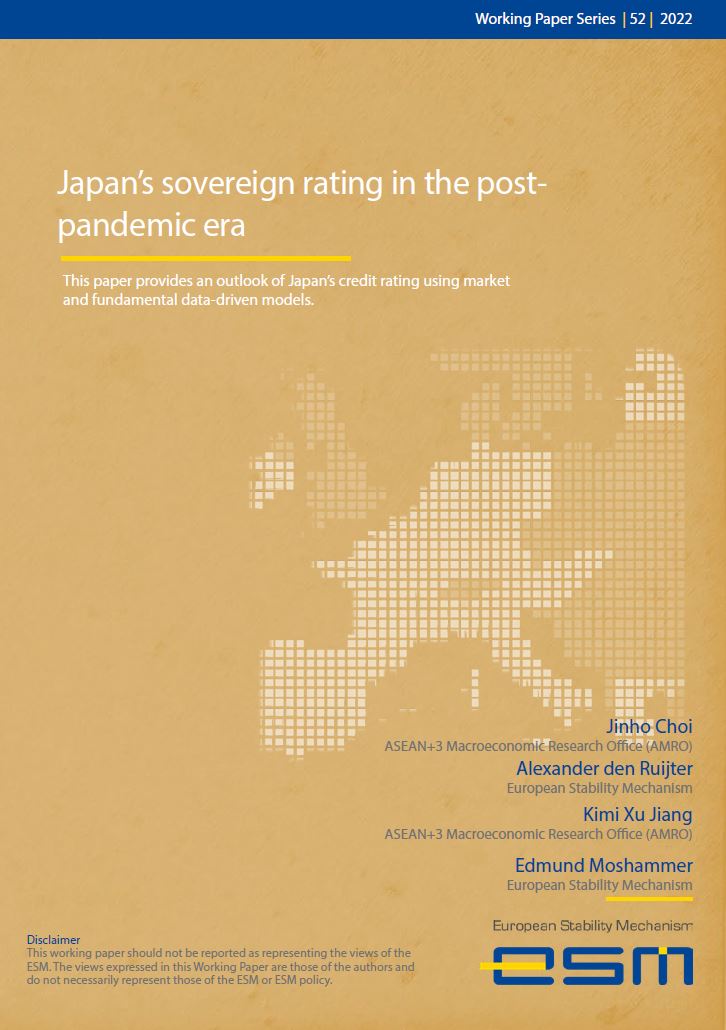Title: Japan’s sovereign rating in the post-pandemic era
Download PDF: Working Paper 52
This paper provides an outlook of Japan’s credit rating using market and fundamental data-driven models.
Authors: Jinho Choi, Alexander den Ruijter, Kimi Xu Jiang, and Edmund Moshammer
Abstract:
We assess Japan’s sovereign credit rating dynamics and its long-term outlook using market-implied and fundamental rating models. Japan’s recent market-implied ratings, which are based on government bond prices and Credit Default Swap (CDS) spreads, have outperformed actual ratings and this could continue over the next few years, supported by prolonged Bank of Japan (BOJ) monetary easing – underpinned by the Qualitative and Quantitative Easing (QQE), the Negative Interest Rate Policy (NIRP), and the Yield Curve Control (YCC). In contrast, our fundamental model foresees up to three rating downgrades in the next decade, driven mainly by a further deterioration in fiscal conditions and a sub-par economic growth outlook relative to peers with similar credit ratings. The pandemic has drastically impacted Japan’s fiscal metrics, but rating agencies might still apply a ‘discretionary bonus’ to sovereign ratings for Japan and other countries for some time, reflecting the symmetric nature of the COVID-19 shock. These discretionary bonuses are expected to fade gradually, but for Japan rating agencies may decide to retain the bonus because of Japan’s exceptionally strong external financial position; the yen’s international reserve currency role; the capacity to refinance its own debt; and Japan’s strong governance profile, all factors that would offset any downward pressures on the credit rating. In our adverse scenario, rating downgrades could trigger higher currency funding costs, lower credit ratings for the private sector, and increase international investment outflows. To avoid this adverse scenario, policymakers need to strengthen fiscal sustainability and accelerate structural reforms to boost the long-term post-pandemic growth potential.
Disclaimer: This Working Paper should not be reported as representing the views of the ESM. The views expressed in this Working Paper are those of the author(s) and do not necessarily represent those of the ESM or ESM policy. No responsibility or liability is accepted by the ESM in relation to the accuracy or completeness of the information, including any data sets, presented in this Working Paper.
Keywords: Structural credit ratings; market-implied credit ratings; sovereign risk; macroeconomic and fiscal fundamentals; Japanese economy
JEL codes: E02, E62, E66, G10, H68
